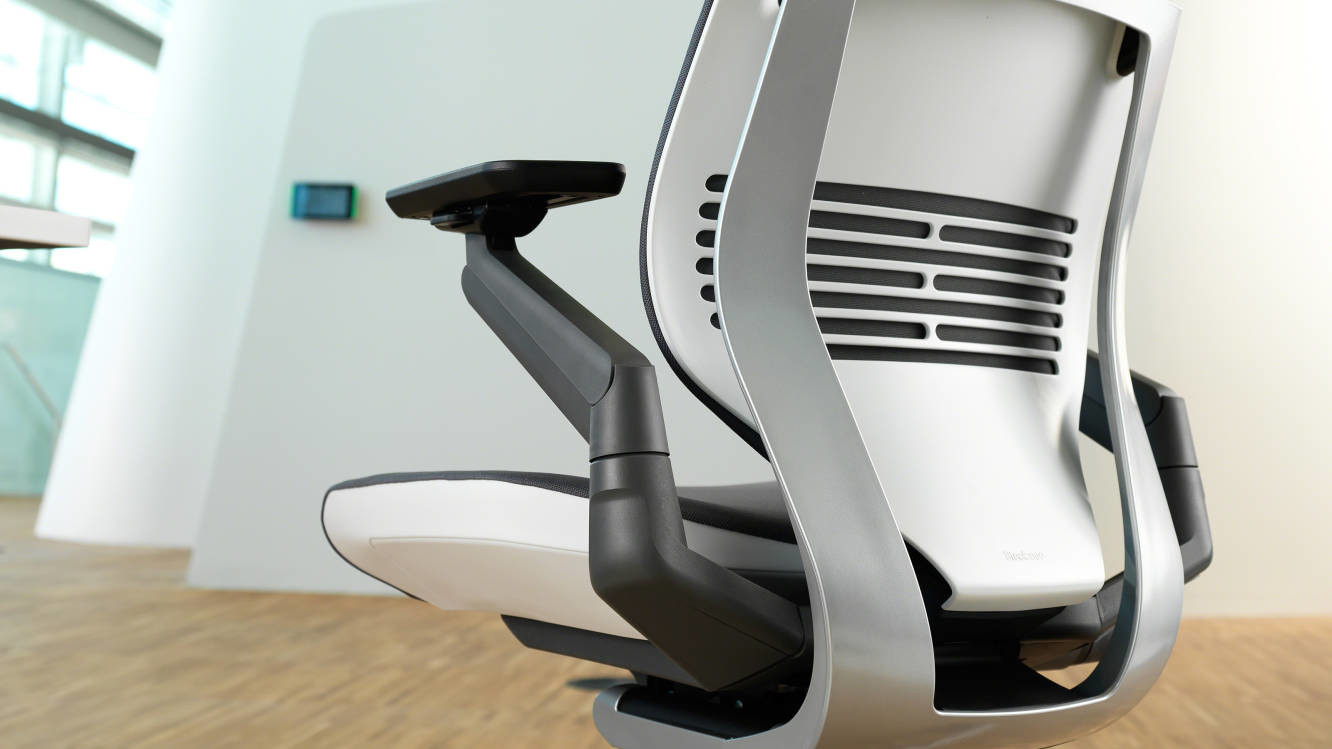5 common mistakes most people make when buying an office chair
What should you look out for when buying office furniture?

These are the 5 common mistakes most people make when buying an office chair - and how you can avoid them.
We've assembled, tested, and reviewed some of the best office chair options you can get right now, and tracked deals aplenty across Black Friday and Amazon Prime Day. So, we know what to look out for when choosing your next computer chair.
There are loads of designs and models out there, from basic office seats to high-end, high-backed swivel chairs, and hundreds in between. As such, it's worth checking out what to watch out for when scrolling images, checking specs, and deciding which one is right for you. To help you make the best choice, here are 5 common mistakes most people make when buying an office chair.
Check out more office furniture in our reviews of the best standing desks and the best office desks.
1. No research or preparation
The top mistake people make when buying an office chair is simply buying an office chair. Just because it looks nice, or it's a good brand, or it's cheap on sale. But to get the right chair, it's worth researching and preparing the groundwork, so you know what to get.
When you finally think you have the right seat, don’t make the mistake of ordering it without considering your existing work setup in-depth, and the exact measurements of the seat you’re about to purchase.
How wide is the chair? Do you have enough desk space for a chair that big? Similarly, how high is your desk? And how high will the chair go at its maximum extension? If you can find the full spec, you also might want to consider, say, the level at which the armrests will be in comparison to your desk – and whether the armrests can be adjusted.
Sign up to the TechRadar Pro newsletter to get all the top news, opinion, features and guidance your business needs to succeed!
In short, try to think through every element of the relative positioning of the chair and your desk, and the amount of space you have in your office, in order to spot any potentially deal-breaking problems in this regard. Furthermore, also bear in mind that all chairs are rated for a maximum weight, so be sure to find a seat that suits you in this respect too.
It’s true that you can send an office chair back in the cooling-off period if you find it doesn’t work in terms of its size, or adjustments, or the way it fits behind your desk; but let’s face it, that’s a hassle which is best avoided if you can anticipate those problems in advance before actually ordering.
2. Fooled by padding
Don’t make the mistake of looking at images of the office chair you’re mulling over, noticing that it has huge amounts of padding, and therefore concluding that the chair must be nicely comfortable.
While having massive padded cushions – something that’s quite common with some relatively cheaper executive chairs you’ll see from unknown brands – might make it seem like a particular chair is comfy, don’t be fooled. Having big padded cushions isn’t necessarily a good thing.
When you look at high-end chairs from makers like Herman Miller or Humanscale, they have padding, sure – but a sensible amount of high-quality padding, and they don’t overdo it. In other words, large padded cushions aren’t particularly desirable from an ergonomic point of view, so while a chair with such padding might look the part in terms of comfort, it may not actually deliver on this front.

3. Ignoring adjustments and lumbar support
When buying a good ergonomic office chair – and ergonomics should always be a key consideration when purchasing a chair you’re going to sit in for a long time, at work all day, every day – make sure you get one which is suitably adjustable. Preferably, you want not just the ability to adjust the seat height, but also its positioning in the horizontal plane, as well as the facility to change the backrest height, armrests and headrests (if the chair has them), plus the tension of the reclining action.
Most good chairs will also let you manipulate the backrest to change the level of lumbar support provided, which is often a crucial factor in making a chair comfortable for you to sit in all day.
Although with some chairs, elements such as lumbar support could be optional – if that’s the case, don’t make the mistake of saving a little bit of money (and it often is only a small amount) in order to do without the ability to adjust this. If at all possible, you really should get a chair which allows the lumbar support to be customized.

4. Forgetting all about the wheels
One small detail that you might forget about is what’s on the end of the chair legs. You’ll doubtless want casters for your office chair, to enable it to be easily moved around – if you want to slide over to a co-worker’s desk momentarily, for example – so the first thing to ensure is that any chair you are buying actually has wheels (unless you really don’t want them, of course).
When it comes to the wheels, however, you will have a choice of two different types – casters for hard floors, or those for carpets. Make sure you don’t overlook the ability to choose the appropriate one (often this is an option somewhere on the chair spec during the buying process online), because getting this wrong could obviously be bad news.
5. Going too cheap
As we mentioned in the introduction, some office chairs can be pretty expensive; but whatever you do, don’t fall into the trap of trying to cut corners. Remember that the more expensive chairs tend to come with 10-year or even longer warranties (we’ve seen 12-year and 15-year affairs).
What you need to remember is that working out the cost over that 10 or 15-year period and breaking it down to a monthly basis gives you a far more palatable seeming outlay for a quality piece of office furniture.
If you buy a cheap chair, it may well fall apart in a few years (or less), so over the course of a decade – or longer – you could end up buying multiple seats which will work out at the same expense as just buying one of the pricier office chairs. Not only is this a budgetary matter, but of course your back will also thank you for investing in a good chair in the longer run – whereas a cheap model could exacerbate any lower back (or other posture-related issues) you may have.
Another additional point to note here is that the kind of reputable companies that make the high-end chairs will have robust return policies – generally speaking – whereas a budget seat from Amazon likely won’t, so bear that in mind too. This is a particularly vital consideration if purchasing chairs in volume for an office, of course.
We checked out the best standing desk mats for adding comfort to your workspace
Darren is a freelancer writing news and features for TechRadar (and occasionally T3) across a broad range of computing topics including CPUs, GPUs, various other hardware, VPNs, antivirus and more. He has written about tech for the best part of three decades, and writes books in his spare time (his debut novel - 'I Know What You Did Last Supper' - was published by Hachette UK in 2013).